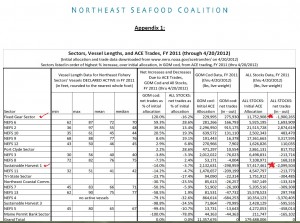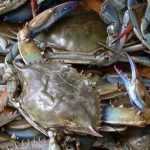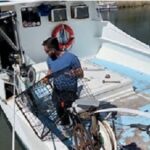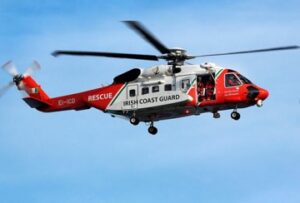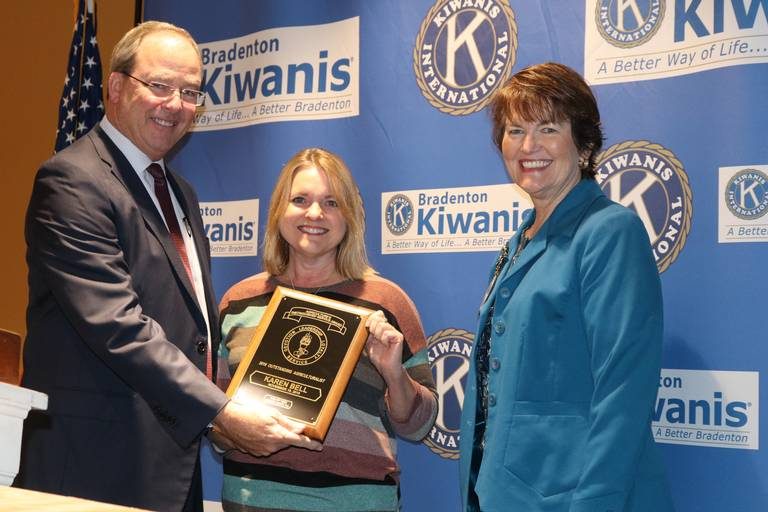Monthly Archives: October 2012
Gulf fishery council to meet in Gulfport, Miss Oct. 29-Nov. 1
The Gulf of Mexico Fishery Management Council will meet Oct. 29-Nov. 1 in Gulfport.
Topics include restoration projects, electronic reporting requirements by for-hire vessels, shrimp, red snapper, gray triggerfish and gag grouper.
People who can’t get to Gulfport can watch public hearings online at http://www.youtube.com/user/gulfcouncil. Comments can be submitted online at the council website, http://gulfcouncil.org/
Online:
Comment submission:
http://gulfcouncil.org/fishery_management_plans/scoping-thru-implementation.php.
Oregon, Washington continue talks to ease gill-nets from lower Columbia River salmon migration lanes
In 2009, a legislator suggested a commercial fishery in the Portland harbor reach of the lower Willamette River. The same year, a highly placed official of the Coastal Conservation Association (CCA) suggested to me we might both live to see the day when commercial fishermen harvest salmon alongside sport anglers in tributaries. Neither idea, of course, came to pass … or was even seriously considered. Until now. Both still remain far from reality following Thursday’s meeting of fish and wildlife commissioners and staffs from Oregon and Washington, but neither is as far-fetched as they seemed three years ago. Netting the lower Willamette is just one of several radical suggestions the beleaguered commercial community brought to Thursday’s meeting.http://www.oregonlive.com/sports/oregonian/bill_monroe/index.ssf/2012/10/post_48.html
Fred Krupp Shameless 1% Shyster. Your Catch Share crap is Flat Out Lie.
In this 10-minute talk from Techonomy 2011 in Tuscon, Ariz., Fred Krupp, President of the Environmental Defense Fund, discusses how new techonoloy is helping to monitor and protect fisheries from over fishing. Data collection using video cameras and powerful software is helping local fisheries in Canada sustain their fish populations by calculating yearly fishing limits for fishermen.
http://techonomy.com/2012/08/fred-krupp-on-using-data-and-tech-to-prevent-overfishing/
Fred, I think the government should install a camera in your bathroom and monitor how many times per day you pull your gear.
Deepwater Wind Statement on BOEM’s Announcement of Wind Energy Area for Rhode Island and Massachusetts
“Deepwater Wind applauds today’s announcement by the Bureau of Ocean Energy Management. We are one step closer to making a regional utility-scale offshore wind farm a reality, serving Rhode Island, Massachusetts, and Long Island, New York. Our Deepwater Wind Energy Center, planned for the site in federal waters announced by the Bureau of Ocean Energy Management (BOEM) today, is the largest planned renewable……….Offshore wind can be constructed and operated in our ocean waters without significant impacts to the important fishing industry. While we firmly believe that offshore wind and commercial fishing can co-exist and thrive in our ocean waters,,,,,,,,,,,Deepwater Wind will soon hire an experienced and respected fisherman from this region to serve as our liaison to the fishing community. Deepwater Wind commits itself to a development and permitting process in which various fishing interests blah blah blah blah, William M. Moore, Deepwater Wind CEO http://dwwind.com/news/deepwater-wind-statement-on-boem-s-announcement-of-wind-energy-area-for-rhode-island-and-massachusetts
http://www.reuters.com/article/2012/10/03/us-deepwater-wind-idUSBRE8920ZX20121003
The Rhode Island Marine Fisheries Council (RIMFC) held meeting in preparation of November 8, 2012 public hearing
Captain Dave Monti. The Rhode Island Marine Fisheries Council (RIMFC) held commercial fluke (summer flounder), scup/black sea bass and herring advisory panel meetings on October 2 in preparation for a Thursday, November 8, 2012 public hearing. The purpose of the advisory panels is to provide industry (fishermen) and the general public with the opportunity to offer input and proposals to be considered at public hearing.
Advisory panels reviewed Department of Environmental Management (DEM) presentations on stock assessment, historical fishing activity and allocations. The November 8th public hearing on proposed management plan changes is scheduled for 6:00 p.m. at the University of Rhode Island, Graduate School of Oceanography, Corless Auditorium, South Ferry Road, Narragansett, RI. Commercial and recreational fishermen are urged to attend and provide input on proposals.
Chesapeake Bay striped bass numbers slump By Timothy B. Wheeler-The Baltimore Sun
After a near-record high a year ago, the drop in the species could spell trouble for recreational and commercial fishing industry. The number of young striped bass in the Chesapeake Bay fell to a record low this year, a drastic decline from a near-record high the year before, Maryland officials reported Tuesday. Biologists checking Maryland’s part of the bay found the fewest newly spawned striped bass that they’ve tallied in any year since annual surveys for the fish began 59 years ago, the Maryland Department of Natural Resources reported. http://www.roanoke.com/outdoors/wb/315532
Fisheries of the Northeastern United States; Northeast Multispecies Fishery; Exempted Fishery for the Cape Cod Spiny Dogfish Fishery –
SUMMARY NMFS proposes to modify the regulations implementing the Northeast (NE) Multispecies Fishery Management Plan (FMP) to allow vessels to fish with gillnet and longline gear from June through December, and with handline gear from June through August, in a portion of inshore Georges Bank (GB) each year, outside of the requirements of the NE multispecies fishery. This action would allow vessels to harvest spiny dogfish and other non-groundfish species in a manner that is consistent with the bycatch reduction objectives of the FMP. DATES Comments must be received no later than 5 p.m., eastern daylight time, on November 5, 2012. http://www.nero.noaa.gov/regs/frdoc/12/12efccsdogfishpr.pdf
NERO Federal Register Actions http://www.nero.noaa.gov/regs/
CARL SAFINA and BRETT JENKS – How to Catch Fish and Save Fisheries – TURF. Another recipe for Catch Shares and Closures!
These guys are just to smart. Silver bullet? Buckshot? If I had a rocket launcher ……..
This will help to understand the mindset. Scientists Confirm That Reality is an Illusion http://www.youtube.com/watch?v=qngieHWZXcM&feature=related
TURF reserves are not a silver bullet. They might, however, be the silver buckshot. With nearly one billion people reliant on the ocean for their primary source of protein, stakes are high. If the most fish-dependent nations adopted widespread networks of TURF Reserve, they can potentially create enough fish recovery to feed hundreds of millions of people. That’s a big if, however. The solution is not to fix a small number of fisheries. We need thousands of TURF reserves in dozens of countries just to get the ball rolling. Ultimately, we need a commitment of governments, foundations, NGOs and the private sector to forge a major investment in near shore fisheries in the developing tropics. The coastal communities themselves must unfurl the ocean’s silver lining.http://www.nytimes.com/2012/10/20/opinion/how-to-catch-fish-and-save-fisheries.html?_r=3&
Carl Safina is founding president of the Blue Ocean Institute at Stony Brook University, where he is an adjunct professor in marine sciences. Brett Jenks is the president and chief executive of Rare, a global conservation organization based in Arlington, Virginia.
Now We’re Talkin”! Iron sprinkling project by a “messing around, bumbling guy,” spawned the growth of enormous amounts of plankton. NOAA provided 20 instrument-laden buoys, Claims the agency had been “misled”.
I love this! The scientific community and the econuts are OUTRAGED! Outraged I tell ya! You tell me what you think. Leave a comment.
A California businessman chartered a fishing boat in July, loaded it with 100 tons of iron dust and cruised through Pacific waters off western Canada, spewing his cargo into the sea in an ecological experiment that has outraged scientists and government officials. The entrepreneur, whose foray came to light only this week, even duped the National Oceanic and Atmospheric Administration in the United States into lending him ocean-monitoring buoys for the project. The iron spawned the growth of enormous amounts of plankton, which Mr. George, a former fisheries and forestry worker, said might allow the project to meet one of its goals: aiding the recovery of the local salmon fishery for the native Haida.
Massive fish kill continues in the Neuse River By Eddie Fitzgerald, Sun Journal Staff NewBern, North Carolina
A massive fish kill on theNeuseRiver that has been ongoing for nearly a month has resulted in thousands of menhaden washed up on beaches nearNeuseHarbor. Mitch Blake, Neuse Riverkeeper, viewed the area Tuesday afternoon, saying there were several hundred thousand dead fish washed up on the beach and in the river. For 21 days, mostly Atlantic menhaden have been dying over a large portion of the river fromNew Bernto Hancock Creek, Blake said in an email. Some of the dead menhaden have ulcers that National Oceanic and Atmospheric Administration officials have identified as Aphanomyces invadans from six samples analyzed in Beaufort.
http://www.newbernsj.com/news/local/massive-fish-kill-continues-in-the-neuse-river-1.31744
Chesapeake Bay Foundation Continually Misrepresents Status of Menhaden – using biased phrasing in their articles
In reference to menhaden, both articles uses the phrase “the most important fish in the sea,” which is frequently used without proper explanation. Originating from Rutgers University English Professor, Dr. H. Bruce Franklin’s book, The Most Important Fish in the Sea, the phrase stems from entirely qualitative judgements made by the author. There is no scientific evidence supporting the hyperbolic statement that any one species of fish is “most important,” and promulgating this idea represents only the authors’ opinion, rather than any scientific consensus.
Although the Epes article states that “The Chesapeake Bay Foundation is pushing for fair and reasonable limits to rebuild the menhaden population,” the organization does not provide a similar description of the status of the menhaden stock, using biased phrasing in their articles to make the species seem in worse condition than it actually is.
Southern Kingfish Association: Menhaden Vital To Ocean Life
October 18,  2012 — The decline of menhaden stocks has caused interest in the health of our oceans. Particularly from Nova Scotia to Texas coastal waters where menhaden once ruled nearshore waters. After a limited search for menhaden while navigating our sport fishing boat out to sea and coming up empty handed, we broke out a box of frozen cigar minnows and placed them into a saltwater filled bucket to thaw. Also called frozen popsicles, frozen cigar minnows are packed into five-pound boxes and used for a wide variety of fishing purposes. In recent years with the decline of coastal baitfish schools, boxes of frozen cigar minnows are frequently finding their way in fish coolers.
2012 — The decline of menhaden stocks has caused interest in the health of our oceans. Particularly from Nova Scotia to Texas coastal waters where menhaden once ruled nearshore waters. After a limited search for menhaden while navigating our sport fishing boat out to sea and coming up empty handed, we broke out a box of frozen cigar minnows and placed them into a saltwater filled bucket to thaw. Also called frozen popsicles, frozen cigar minnows are packed into five-pound boxes and used for a wide variety of fishing purposes. In recent years with the decline of coastal baitfish schools, boxes of frozen cigar minnows are frequently finding their way in fish coolers.
The article blames an alleged lack of menhaden in the Jacksonville, Florida area on commercial fishing in the Chesapeake Bay, over 600 miles away. This argument relies on anecdotal evidence from observations made by one boat on one day, and the schooling patterns of menhaden during two days of a fishing tournament.
anti menhaden fishing campaign is in full swing. Newport News Daily Press readers are presented with a biased editorial while Saving Menhaden Fisheries dissects and debunks.
Particularly, Mr. Joseph’s depiction of menhaden stock assessments and stock assessment science is riddled with inaccuracies, especially when he writes, “the science now shows what every recreational fisherman in the Bay has known for years, which is that the menhaden fishery has collapsed.” The “science” draws no such conclusion. Both the 2010 and 2012 menhaden stock assessments released by the ASMFC concluded that menhaden were not overfished, with the 2012 assessment measuring the stock at 40 percent above its fecundity threshold. This means that, far from having collapsed, the stock is producing more than enough eggs (40 percent more) to sustain itself.
Letter: Accumulation of quota harms fishing industry – Frederick Brodsky – southcoasttoday.com
October 18, 2012 12:00 AM
Accumulation of fishing quota harms the whole industry
I keep reading about the demise of the fishing industry as the result of reduced quotas, as you point out on Page 1 of the Oct. 14 edition (“Industry’s big, little fish in peril”). What is not mentioned is the effect of “slipper captains” who sell their quotas, sit on shore and do not contribute to the health of the industry.
This concentration of quotas also has a major effect on the health of the fishing industry. Fewer boats with a larger percentage of quotas exacerbates the effect of smaller quotas. Why will no one discuss this practice or its effect on the industry?
Frederick Brodsky
Fairhaven
Facing restrictions, fishermen welcome possible disaster aid
Another EDF puff piece from the boring broadsheet! A lot of BS in this one.
South Shore fishermen welcome the prospect of aid from September’s federal disaster declaration, but they remain critical of fishery management practices. Unprecedented competition from large boats over the last year has hurt the mostly smaller boats that populate harbors in Marshfield, Plymouth, and Scituate, they said. The disaster declaration allows, but does not require, Congress to appropriate money. Affected states are asking for $100 million, but the funding is not guaranteed.http://bostonglobe.com/metro/regionals/south/2012/10/17/south-shore-fishermen-welcome-possible-disaster-aid-seek-long-term-solutions/DVHh7P6BvUG4Nhdnb7PPiO/story.html
AUDIO: NEFMC Groundfish Committee’s Oct. 11 Meeting Prompts Discussion Related to Closed Area Access and Transboundary Stock Shares
HAMPTON, N.H. – October 11, 2012 – The New England Fishery Management Council’s (NEFMC) Groundfish Oversight Committee met last Thursday to continue development of Framework Adjustment 48 to the Northeast Multispecies Fishery Management Plan. Throughout the discussion, there were several key issues that emerged as focal points for a great deal of Committee and public comment, as well as debate. 
Invasive species known as ‘marine vomit’ found at Drakes Estero – Santa Rosa Press Democrat
A newly discovered invasive species capable of blanketing shallow bay bottoms has turned up in Drakes Estero in the Point Reyes National Seashore, prompting calls for immediate action to curb the biological threat and entering the debate over the future of the commercial oyster farm there. A fast-growing sea squirt, Didemnum vexillum, is actually thousands of tiny animals that cluster under a common membrane. It is called “marine vomit” for its unappealing gelatinous mass and has been likened to “the Blob” for its capacity to smother other organisms, possibly including the estero’s $1.5 million-a-year oyster crop and its abundant eelgrass beds. The dispute over the farm’s fate erupted about five years ago, and legislation by California Sen. Dianne Feinstein granted Interior Secretary Ken Salazar sole discretion to renew for 10 years the permit that expires Nov. 30. http://www.mercurynews.com/ci_21777864/invasive-species-known-marine-vomit-found-at-drakes
Seal Problems Everywhere! Fishermen want cull of New Zealand fur seals around the Coorong Lakes area
“If these populations continue to increase at the levels they have been, the impact on the broader ecosystem will be such that something will need to be done,” Goolwa Pipi Harvest Association chair Roger Edwards said.
“We harvest other native species like kangaroos.
“If the species is not under threat and it is having an impact and there is a viable market, then why should it not be harvested?
U.S. Coast Guard, Canada partner to curb illegal fishing in the Pacific Ocean (SitNews)
(SitNews) – The U.S. Coast Guard and the Canadian Department of Fisheries and Oceans recently conducted joint patrols of the high seas under Operation Drift Net which took place from Sep. 19 to Oct. 6. Coast Guard cutters and Canadian aircraft patrolled the international waters off Japan in an effort to locate vessels engaged in large-scale high seas drift net fishing. This practices employs the use of miles upon miles of net constructed of mono-filament line that indiscriminately catch all sea life in their path including whales, dolphins, sea turtles and seabirds. The fishermen are known to target high value species such as sharks, tuna and salmon.,,,,,,,,,,Read More.
http://www.sitnews.us/1012News/101712/101712_illegal_fishing.html
Fertilizers and sewage contain nitrogen and phosphorus suck oxygen out of water and kill marine life.
Its the sewerage treatment plant’s I tell ya! The Conservation Law Foundation should recognize this as the real ocean issue.
The study may have real policy implications, especially in New England communities struggling with waterways choked by algae sparked in part by nutrients. For years, governments have often argued that they are responsible only for pollution problems in surface waters that can be traced directly to a source, said Christopher Kilian, clean water program director for the Conservation Law Foundation. But the study, he said, points to the need for regulatory agencies to deal with nitrogen emanating from a broad array of sources that may have more subtle, yet deeply harmful, environmental impacts. “It creates more urgency to deal with nitrogen and phosphorus pollution pouring into our waterways from so many sources,’’ said Kilian. http://www.bostonglobe.com/lifestyle/health-wellness/2012/10/17/plum-island-salt-marshes-may-disintegrating-from-fertilizer-and-sewage-nutrients/5YRk5IFYHyaB47rLQ18VaM/story.html
Menhaden were once so plentiful in the Atlantic that early pioneers described them as thick enough to hold up teams of oxen! Yessuh!
September 24, 2012 — Menhaden were once so plentiful in the Atlantic that early pioneers described them as swimming in schools twenty-five miles long or more, packing themselves into bays and estuaries where they came to feed on dense schools of phytoplankton (algae and vegetable matter). But those days are long gone. In the 1950s, the introduction of spotter planes and hydraulic technology to the fishery resulted in blowout years: 1.5 billion pounds of menhaden were caught in 1956, largely from the Chesapeake Bay and its environs. Ten years later, the catch had declined 70 percent, to 464 million pounds. The menhaden are currently at record low numbers.
At least according to Alison Fairbrother, director of the Public Trust Project. Through exaggeration and undocumented statements, Ms. Fairbrother presents selective and misleading facts about the menhaden fishery in her interview. This ultimately misconstrues their current status and misleads the public about the health of the fishery. Allison. Get off the pipe!
Extensive analyisis from saving menhaden fisheries
UFA Ready to Fill Executive Director Position – Fishermen’s News
For Seafood Landings, Port of Dutch Harbor Retains First Place – Fishermen’s News
National Ocean Policy: A New Bureaucracy That Could Compromise Regional Fisheries Management By Stephanie Madsen
The most disappointing aspect of the Obama Administration’s relationship with the Pacific Northwest/Alaska commercial fishing industry is its rigid and inflexible approach in creating a National Ocean Policy (NOP). In July 2010, President Obama issued Executive Order 13547, formally establishing an ocean policy, creating new councils and committees throughout the federal government, and directing agencies to undertake a broad array of new oceans-related activities.
While the fishing and fish processing sectors could embrace many aspects of the NOP initiative, several aspects of the NOP are so unpalatable that we cannot support the policy going forward ,,,,,,,,Read More
Mill River Dam Removal in ‘Herring Town’ Launches Regional River Restoration, gathering at the riverside Friday, Oct. 19 Taunton, MA.
For the first time in nearly 200 years, the Mill River winds its way through Taunton, providing natural habitat for fish and wildlife, and flood protection for local people. Over the past two months, the Hopewell Mills dam has been completely removed, and habitat restoration work continues at the site. “This is the first step in restoring an ecologically critical tributary to the Taunton River,” Mary Griffin, commissioner of the Massachusetts Department of Fish and Game.
Conservation and community leaders will gather at the riverside Friday, Oct. 19 to celebrate the successful dam removal and announce the next steps in the broader Mill River restoration effort, a partnership to remove three dams and construct a fish ladder and eel pass at a fourth.
WHERE On the banks of the Mill River, at the corner of Barton and Danforth streets in Taunton, MA. Tours of the project site will follow formal remarks.
WHEN Friday, Oct. 19, 2012, 11:00 am – 12:30 pm
http://boston.citybizlist.com/contributed-article/hopewell-mills-dam-removed-fish-passage-restored
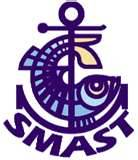
SMAST professor Brian Rothschild, and the SMAST Team are coming to the rescue! (There is a God!) It ain’t NOAA either.
http://www.youtube.com/watch?v=oHSkMwUa2i4
I’m willing to bet my sou’wester that the SMAST Team will get some real results that the industry can believe.
SMAST plans independent groundfish survey to assist groundfishermen By DON CUDDY
DARTMOUTH — Frustrated by doubts surrounding the accuracy of fish stock assessments conducted by NOAA and with the groundfish industry in crisis, UMass Dartmouth’s School for Marine Science and Technology plans to launch an independent survey of groundfish stocks. “(NOAA Fisheries) is saying they don’t have time to review the assessments that are on the table,” said SMAST professor Brian Rothschild. “But this is really high stakes and we need to do something before May 1.” The new fishing year, with cuts of 50-70 percent projected for key stocks, begins May 1. Such drastic cuts threaten to force many independent fishermen out of business.
http://www.southcoasttoday.com/apps/pbcs.dll/article?AID=/20121017/NEWS/210170334
UNCLOS: Senate ratification is optional?
I’ve always believed that UN treaties could not be implemented in the USA without Senate ratification? What’s up with this?
Apparently NOAA disagrees with waiting for US Senate ratification of the UNCLOS (aka the law of the sea treaty):
As a matter of national and economic security and international leadership, the U.S. follows the U.N. Convention on the Law of the Sea. This law establishes claims of territorial waters and universal legal controls for the management of marine natural resources and the control of pollution.







